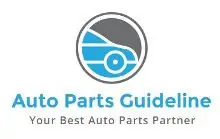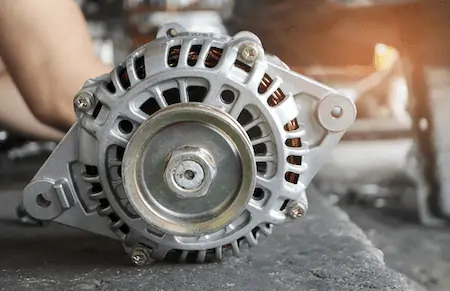If you wish to install a winch on your vehicle, you should remember that the winch will demand a lot of power from the battery. To save up on power, all you need is a winch with a minimal amp draw.
One of the factors that you have to consider while choosing a winch is amperage. Understanding winch amperage will help you in a lot of ways. Let’s check them out without any further ado!
Understanding Winch Amperage: The Basics

Amp draw, line speed, and line pull are the basic factors that you have to understand first.
Amp Draw
Amp draw refers to the power that the winch will require from the battery. The quantity of current drawn by the amp is determined by how hard the winch pulls the thing. The manufacturer will provide you with a chart when you purchase a winch.
It contains information about the amp draw that winch will generate at various pulling increments up to the maximum pull rating. Most of the graphs you will come across will show you the value of the first wrap value.
The amount of pull created at the amp will be lowered. It happens as the wraps on the drum stack up, and leverage is lost.
Line Speed
While understanding winch amperage, you will also have to learn about line speed. Line speed refers to how quickly the winch rolls up the cable onto the drum at different loads.
The figures will be reported in feet per minute, according to US charts. The other types of charts, on the other hand, frequently include line speed data at numerous increments of line pull.
When considering a winch’s line speed, keep in mind that as layers build upon the drum, the line drawing will decrease, but the feet/minute value will remain constant. There are times when you may be duped when it comes to RPM maintenance.
In such instances, you must understand that the winch will not keep a constant RPM and that the line speed will not rise as the diameter of the wrap increases.
It’s all about power when it comes to line speed. You can adjust the pull while reducing the line speed or maintain the line speed while reducing the pull.
However, as the wraps build up and the winch loses leverage, you can’t regulate both line speed and pull together.
Line Pull
If you’re pulling a significantly heavier load, it’ll require more amps to continue the pulling action.
So, you must also choose a rope based on your preferences. Depending on your choice, you can use a synthetic rope or a steel wire cable.
Now, line pull is important to understand for identifying your winch’s ability. It’s the total amount of pull that your winch will be able to produce before stalling. If you have a 7,000 lbs. winch, it can produce a 7000 lbs. line pull before it’ll stall.
How to Convert HP to Amp
We have all heard about horsepower and how it relates to machine work. To give you a concrete example of the phrase, it is a measurement of electric power equivalent to 746 watts.
To convert the horsepower of your winch to an amp, you must first determine the horsepower of the winch motor. If you can figure that out, you can easily predict the amp draw to within a few percent.
Although there are various mathematical formulas available to assist you in determining the amp value, we’ll now provide you with the easiest formula:
Amps = (Horsepower × 746) ÷ Efficiency ÷ Volts
Let’s demonstrate how to complete your computation to determine the conversation value. Consider the following scenario.
Allow a 1 HP motor to run at 80% efficiency and 120 V. As a result, the amp draw will be as follows:
Amps = (1HP x 746W) ÷ 0.8÷ 120V
Amps = 7.7 A
Frequently Asked Questions
#1. How much amperage does a winch use?
The amount of amperage that a winch can pull completely differs from one manufacturer to the next. However, the majority of the winches will initially pull less than 100 amps.
The amount of amps increases as the weight of the load increases. Pulling a 2000-pound object, for example, will use 150 amps. As the load is applied, keep an eye on the voltage.
#2. What winch rating should I choose?
The vehicle’s weight determines the winch rating you’ll need. You’ll need a winch with a greater rating if your car is heavier.
The winch you choose should be able to endure a weight 1.5 times greater than the weight of your vehicle. If you want to determine the value, find out the vehicle’s gross weight from the manufacturer’s website and multiply it by 1.5.
That concludes our discussion. Although this is the bare minimum, certain situations may cause your winch capacity to be surpassed.
#3. Which companies produce the best winches?
If you search the market for the best winch, you’ll find several products that are now ruling the market. For starters, the WARN is the overall best winch manufacturer on the market. All of the winches they’ve produced have excellent performance numbers.
Smittybilt is another long-lasting winch manufacturer that assures excellent durability and a solid feel. They have hydraulic and electric winches available. You can also rely on Super-winch, which is the world’s largest winch manufacturer.
They are not only inexpensive, but they are also dependable and heavy-duty winches. They even use military-grade materials to create the winch, making it far more durable.
However, stay away from companies like Ramsey, as their winches aren’t strong enough for heavy-duty hauling. There are, however, other excellent winch brands to consider, such as Mile Marker and X-Bull.
Conclusion
Although numerous factors influence a winch’s efficiency, understanding winch amperage is the first step you should take before purchasing a winch for your car. It allows you to find the winch that suits your needs.
Aside from the technical specifications, you should think about the craftsmanship, material grade, corrosion resistance, water resistance, durability, and various other factors.
It happens since the spec sheet alone is insufficient to establish the winch’s quality!



![Read more about the article Roller Fairleads vs. Hawse Fairleads [Guide for Beginners]](https://autopartsguideline.com/wp-content/uploads/2021/10/winch-fairleads-300x198.webp)
![Read more about the article Is Diesel Engine Better For Off-Roading? [5 Solid Reasons]](https://autopartsguideline.com/wp-content/uploads/2021/11/is-diesel-engine-better-for-off-roading-300x196.webp)
![Read more about the article How to Bench Test A Winch Motor [Complete Guide]](https://autopartsguideline.com/wp-content/uploads/2022/02/bench-test-a-winch-motor-300x192.webp)